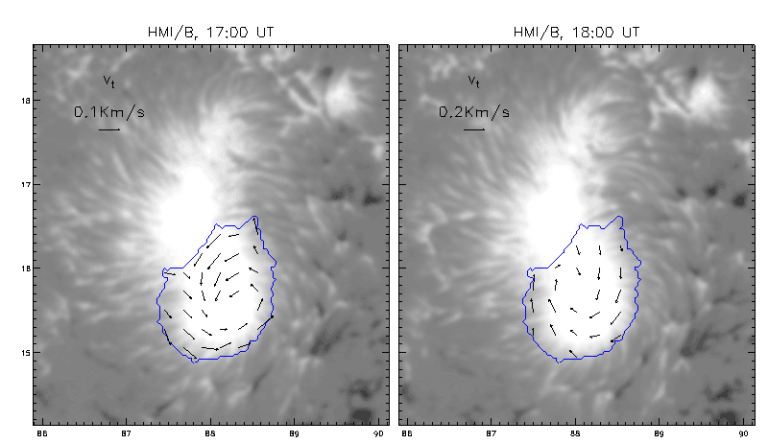The rotation of the sunspot is regarded as a process that transfers magnetic helicity from the solar interior to the corona. It is widely known that the clockwise rotation of an upwardly directed magnetic flux tube transfers positive helicity from the solar interior into the corona, while the counterclockwise rotation transport negative helicity into corona. However, what will happen if a sunspot’s rotation completely reverse?
BI Yi and Prof. JIANG Yunchun, from Yunnan Observatories, Chinese Academy of Sciences, for the first time reported that the direction of a sunspot’s rotation is reversed impulsively, based on observations from the Helioseismic and Magnetic Imager. They noted that the sunspot rotated counter-clockwise before an X1.6 flare but clockwise during it. (Fig1)Their research results, entitled Observation of a reversal of rotation in a sunspot during a solar flare, have been published on Nature Communications.
The counter-clockwise rotation in the sunspot before the flare did play a role in transporting the negative helicity from the solar interior into the solar corona. However, the abrupt reversal of rotation in the sunspot indicates the impulsive change in the transportation of magnetichelicity across the photosphere. Because the rapid changes in the motions at the photosphere during the flare are more likely driven by the flare than by convective flows in the solar interior, the reversal in the rotation of the sunspot is more likely resulted from the transportation of magnetic helicity from the corona to the solar interior, instead of from the solar interior to the corona.
"We decide to start this work when we noted that the impulsive change of the sign of the injected helicity occurred during the flare. After carefully examining the data, we note that the reversal in the rotational motion of a sunspot during the flare was the primary contributor to the abrupt change in helicity transportation." BI says. "The results may provide new observational constraint for models of solar flares."
This work was supported by the National Natural Science Foundation of China.

Fig1. The background greyscale image shows the vertical field, with the positive field in white and the negative in black. The arrows indicate tangential velocity vectors inferred from the DAVE4VM technique.(Image by Bi Yi)
Contact
BI Yi